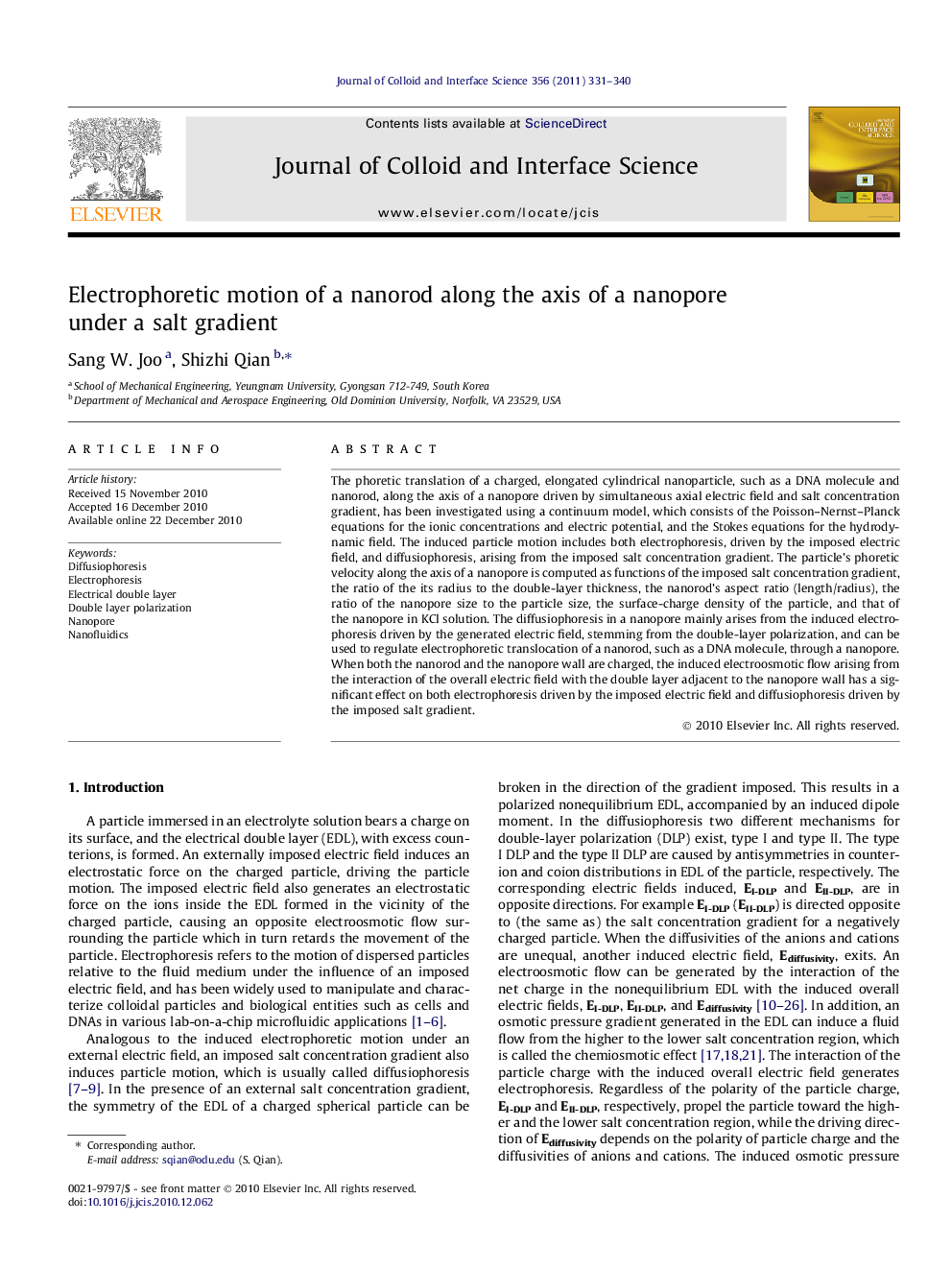| کد مقاله | کد نشریه | سال انتشار | مقاله انگلیسی | نسخه تمام متن |
|---|---|---|---|---|
| 608741 | 880607 | 2011 | 10 صفحه PDF | دانلود رایگان |

The phoretic translation of a charged, elongated cylindrical nanoparticle, such as a DNA molecule and nanorod, along the axis of a nanopore driven by simultaneous axial electric field and salt concentration gradient, has been investigated using a continuum model, which consists of the Poisson–Nernst–Planck equations for the ionic concentrations and electric potential, and the Stokes equations for the hydrodynamic field. The induced particle motion includes both electrophoresis, driven by the imposed electric field, and diffusiophoresis, arising from the imposed salt concentration gradient. The particle’s phoretic velocity along the axis of a nanopore is computed as functions of the imposed salt concentration gradient, the ratio of the its radius to the double-layer thickness, the nanorod’s aspect ratio (length/radius), the ratio of the nanopore size to the particle size, the surface-charge density of the particle, and that of the nanopore in KCl solution. The diffusiophoresis in a nanopore mainly arises from the induced electrophoresis driven by the generated electric field, stemming from the double-layer polarization, and can be used to regulate electrophoretic translocation of a nanorod, such as a DNA molecule, through a nanopore. When both the nanorod and the nanopore wall are charged, the induced electroosmotic flow arising from the interaction of the overall electric field with the double layer adjacent to the nanopore wall has a significant effect on both electrophoresis driven by the imposed electric field and diffusiophoresis driven by the imposed salt gradient.
By simultaneously applying an axial electric field and salt gradient, one can use the induced diffusiophoresis to control the electrophoretic translocation of a nanorod, such as a DNA.Figure optionsDownload high-quality image (57 K)Download as PowerPoint slideResearch highlights
► Imposed salt gradient induces a nonequilibrium electrical double layer.
► There are two mechanisms for diffusiophoresis: induced electrophoresis by the generated electric field and chemiphoresis by the induced pressure gradient.
► One can use the induced diffusiophoresis to control the electrophoretic translocation of a nanorod, such as a DNA molecule.
Journal: Journal of Colloid and Interface Science - Volume 356, Issue 1, 1 April 2011, Pages 331–340